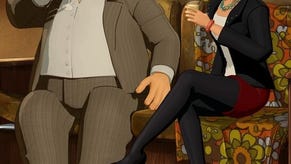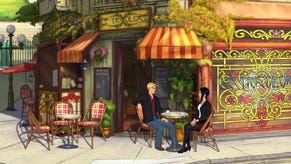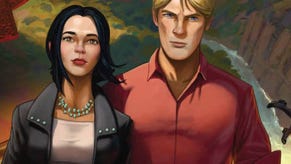Paris in the Spring – Broken Sword 5: The Serpent's Curse (Part 1) PC Review
George Stobbart and Nico Collard return for another grand adventure; can Charles Cecil's latest live up to the legacy of its predecessors?
This article first appeared on USgamer, a partner publication of VG247. Some content, such as this article, has been migrated to VG247 for posterity after USgamer's closure - but it has not been edited or further vetted by the VG247 team.
Broken Sword is an adventure game series with a long and proud history. But it wasn't always regarded quite as universally fondly as it is today.
In fact, according to the copy of defunct UK games magazine PC Zone I have before me now -- an issue I keep around purely for vanity reasons since it marks one of the first occasions I was ever published in print -- the first Broken Sword game Shadow of the Templars was deemed worthy of a respectable-but-not-quite-unreservedly-recommended 79 out of 100, and dismissed with the summary judgment that it featured "far too much talking."
Shadow of the Templars originally came out pretty early in the CD-ROM era, you see, and was one of the first adventure games to not be released in unvoiced format on floppy disk as well as a "talkie" CD version. No; Broken Sword was one of the earliest adventure games to be specifically designed for the larger storage capacity media we take for granted today, and consequently it was crammed full of lovingly animated cutscenes, high-resolution backdrops (or what passed for "high-resolution" back in the late '90s, anyway) and detailed characters. And, of course, lots and lots of talking.
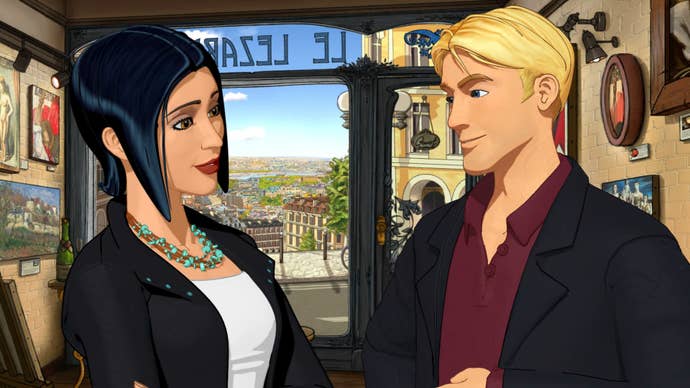
Protagonist George Stobbart accounted for much of the game's verbosity. He was a talkative fellow by all accounts, and acted as the game's past-tense narrator as well as being an active participant in the on-screen action; consequently, you spent a lot of time listening to his gentle voice. It was an interesting twist on the way adventure games were usually presented -- outside of Sierra's games, which usually had a third-person present-tense omniscient narrator if they had one at all, it was unusual for a game character to also act as narrator, but it worked particularly well with the game's slow, almost novel-like pacing.
The reason I dwell on Broken Sword's history so much here is that, after a couple of experiments in bringing the game into the 3D age with the franchise's third and fourth installments, Broken Sword 5: The Serpent's Curse returns to the formula firmly established by the first two games: slow, careful and considered pacing; exposition through a combination of past-tense narration and lengthy conversations; and an emphasis on the unfolding story rather than incongruous puzzles. Oh, and gorgeous 2D art.
Indeed, The Serpent's Curse very much feels like one of the first two Broken Sword games, right down to using an almost identical interface, albeit with higher resolution graphics and characters that are now rendered at such a high level of detail that they can walk right up to the "camera" without becoming blocky and pixelated. A short tutorial scenario allows point-and-click newbies to become accustomed to how the game works but really there's very little to learn: left-click interacts with something according to what the cursor turns into when you hover over an item; right-click examines something and prompts George (or, occasionally, Nico) to muse on the subject.
Broken Sword 5 returns to the formula firmly established by the first two games: slow, careful and considered pacing, and exposition through narration and conversation.
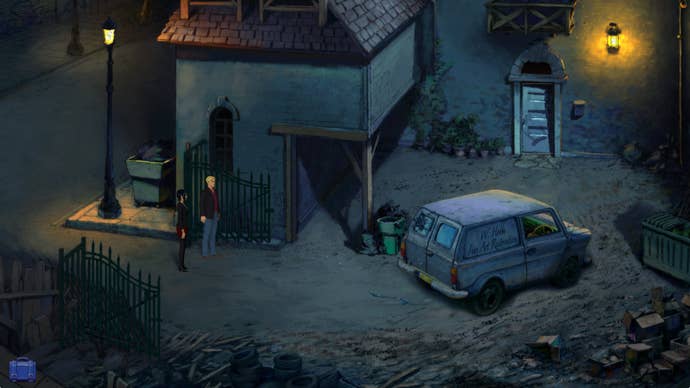
The game's pacing is good. With this first part of the adventure -- the second part is coming in the first quarter of next year, hopefully in January if all goes according to plan -- clocking in at around 6-8 hours depending on how quickly you do manage to solve the few brainteasers scattered along the way, I never really felt like there was any "downtime," and the thing you're supposed to be doing next is normally made obvious without explicit signposting. This helps keep the story flowing along nicely without it feeling like the game's holding your hand too much, and means that an age-old adventure game tradition -- a save game with the simple description "stuck" -- is more than likely a thing of the past, though I have a suspicion the existence of GameFAQs killed that particular tradition a number of years previously.
As for the story itself, it's typical Broken Sword fare, with everything that entails, although this time around protagonist George's supposed job is at least relevant to the plot as a whole. In previous Broken Swords, George was supposedly a patent lawyer, but this ultimately had little to do with anything; in the intervening years between fourth game The Angel of Death and The Serpent's Curse, he's had a slight career change to insurance assessor, however, and this fits in much more neatly with the game's central mystery of an art theft and related murder -- indeed, there are a number of occasions where he actually makes use of his own job rather than attempting to pose as someone he's not as in previous installments.
Another recurring theme from previous Broken Swords is the slow reveal that all is not quite as simple as it initially appears. What initially appears to be a relatively straightforward case of art theft, murder and insurance fraud gradually opens up into something with deep ties to history along with the Dominican and Gnostic faiths, though frustratingly the game as it stands at the time of writing ends with a cliffhanger just as things are starting to get really interesting in this regard. Thankfully, though, it's likely only going to be about a month or so to wait for the resolution; this isn't Telltale we're talking about here, and once both parts are available, the game will be complete as a single work rather than two separate episodes; the second half will be delivered as a free update and simply bolted on to the end of the existing game.
The story as it stands ends at a good natural break, but it's also somewhat unsatisfying to reach the credits and know there's still more to come that you can't access as yet.

With this in mind, it's perhaps tough to recommend that you pick up Broken Sword 5 right this second; although the story as it stands ends at a good natural break with a bunch of narrative threads neatly wrapped up, it's also somewhat unsatisfying to reach the "end credits" and know there's still more to come that you can't access as yet. Waiting until the second part will mean that you'll have the complete experience without having to take an enforced break -- and it may also mean that some of the technical hitches here and there in the game are resolved, too; I encountered three unprovoked crash-to-desktop issues during play, though thankfully the game autosaves regularly, so I never lost more than a minute or two's progress when this did happen.
We'll revisit the game when the second half is available; for now, it's a fine return to form for the series after something of a break -- but one you should approach with caution if you're after an uninterrupted narrative experience. What's here is very good indeed and absolutely well worth your time, particularly if you're a fan of George and Nico's previous adventures; the overall story is simply left dangling somewhat, so your decision as to whether you should buy now or wait should be based on your own tolerance to cliffhangers.
The Nitty Gritty
- Visuals: High-res backdrops coupled with 2D sprites created through 3D modelling makes for a good-looking game -- though some of the animations are a little wooden at times, and occasionally you'll have to wait for a character's animation to complete before something happens.
- Music and Sound: Subtle but effective musical cues capture the atmosphere of the previous games, while strong, consistent-quality voice acting -- and some admirably authentic-sounding French and British accents -- help immerse you in the world and its diverse cast of characters
- Interface: Broken Sword's interface was always one of the better examples of ways to interact with an adventure game, so little has changed here; it's simple and intuitive.
- Lasting Appeal: Part 1 will last you around 6-8 hours or so; its slow pacing lends it particularly well to playing a scene or two at a time and spreading it out over a few sessions rather than bingeing. Once you're done, there's little reason to return save wanting to experience the story again -- much like a good book.
ConclusionA solid return to form for a long-running series with a proud heritage -- though right now it's left frustratingly hanging and thus may provide a better experience once it's all wrapped up.


